Nothing is quite as satisfying as a delightful bottle of olive oil. So when Cobram Estate invited us to Australia to experience their 2016 olive harvest first hand, we jumped at the opportunity. Here is our globetrotting friend and occasional collaborator Orissa Stewart Rose with the rundown of her week down under:
For many of us, olive oil is part of everyday life – we eat it, cook with it and sometimes use it for body care. But how many of us really know what it means when the oil bottle says ‘Cold Pressed’ or understand the importance of the ‘Extra Virgin’ distinction? Despite my affection for olive oil, I am no expert, so jumped at the chance to visit a premier olive oil producer during harvest season. Part education intensive and part eating marathon, my week in Southern Australia with a crew of Cobram Estate growers and enthusiasts was one I won’t soon forget. A mix of passionate Aussies and fun loving Americans, Cobram Estate Olive Oil is an Australian heritage brand that is quickly making its mark on the American olive oil market through new products and groves in Northern California. To understand what it takes to make their internationally acclaimed EVOO, we visited Cobram’s nursery, groves and bottling facility . . . and now you can be an expert too!
As my visit to Cobram’s nursery taught me, quality EVOO comes from strong trees and unique olive varieties that are doted on from the start. It all begins in humid tents where over 30 varieties of olive seedlings are nurtured and amply watered. Once the trees surpass about four feet in height, they are transferred to larger pots in a slightly less humid section. This transition begins to toughen them up for real life in the hot sun. After another growth spurt, the teenage trees move to a protected outdoor area, where they stay until being booted from home to start their adult lives in Cobram’s 25,000 acres of groves.
A short hopper flight from Melbourne lies Cobram Estate’s groves at Boundary Bend in the Murray Valley, also known as the Napa of Down Unda. Because a successful harvest depends on being in tune with the trees, Cobram growers spend the late summer/early fall months tracking fruit maturity and collecting samples. Ideal EVOO olives have a maturity index rank of 3-4 (out of 7) and are visually identified as those that are not all one color, but a blend of green and purples. Once samples show a particular grove is ready, it’s time to get the machines fired up! Part tractor, part branch brush, the Colossal drives through the precisely spaced grove rows, shaking olive tree branches to loosen the fruit while causing minimal damage to the tree. Though some producers still harvest by hand and rake, machinery like the Colossal is key to high production– it captures 93 % of all olives from trees and in one hour, can collect what would take one full day to collect by hand. Accordingly, consumers like us benefit from sustainable, high-quality EVOO at a modest price point. Strainers and propellers in the colossal separate the fruits out from branches and leaves before dumping them onto a conveyer belt which drops them into massive truck beds buckets. Immediately thereafter, the harvested olives are driven back to the processing area because the best EVOO comes from olives that are pressed immediately, and didn’t spend too long getting warm in storage containers.
In addition to being what I wager is the best smelling place to work, a lot of magic happens in the processing facilities. All lingering leaves are removed, and the freshly picked olives are cleaned before being dumped into the huge silos and prepped for oil extraction. These olives undergo a ‘cold press’ process, which doesn’t actually mean the entire process is cold or absent all heat, but signifies that the olives that were not heated above 80 degrees Fahrenheit. Cold pressing is a key indicator of quality, flavorful olive oil, and any purest will shudder at the thought of processing olive oils at high heat. It is a major no-no because it dulls the natural flavors, and is only necessary when rancid, fallen or overripe olives are used and thus must be highly refined to be fit for human consumption. To extract the oil, the fruit is crushed (looked like tapenade) and spun to separate out the pulp. Before you know it, the final product of bright green liquid is pumped out and ready for my favorite part – the taste test. Pro tip: if you have the chance, sample freshly produced EVOO! It tastes different than what we get in bottles because the sediment from a fresh press settles in tanks or is blended with other harvests, delivering a different – though still delicious – taste to our tables. With my über chic hairnet in place, we ventured into Cobram’s bottling facilities, where millions of bottles of diverse varietals are packaged up for distribution annually. Here, EVOO is efficiently transferred from 30,000 gallon vats into dark glass bottles (key for oil preservation), sealed and whisked off for sale.
Finally, the time has come! Not that I needed convincing, but the four course lunch prepared by Chef Kevin O’Connor proved that EVOO literally goes well with anything. My favorites were EVOO marinated Kangaroo served up a grilled grape roux, and a simple dessert of fresh persimmon atop a fluffy bed of EVOO frosting. Honestly, YUM.
I leave you with a couple tips that will make your next EVOO shopping experience or party a more informed one….
- Remember to look out for ‘cold pressed’ and ‘extra virgin’! EVOO is the world’s most adulterated (e.g. diluted) food, followed by honey, milk and Saffron. That is why you want to always look out for the ‘extra virgin’ on the label. Without that classification, chances are your olive oil that has been cut with other oils, like vegetable.
- Olive oil tasting is very fun and easy to do. First, cover the small tasting glass with your palm and swirl it (though not too vigorously, as I learned). Next, take a big whiff of the EVOO – think about (and discuss) what notes you’re picking up. Much like wine, it is common to detect flavors like grass, wood, straw, floral and butter in EVOO. Next, slurp the oil so that air comes into the sides of your mouth while you are holding the oil on our tongue before swallowing. You’ll be surprised at all the different flavors you note on your tongue and throat, and how easy it is to make a night of it (See Karen’s party tips here).
- The sniff test – To check if the olive oil in your cupboard is good, smell it. Anything stale, vinegary, metallic or plastic is no bueno – toss it!
- It’s not all about looks –color saturation of is not a foolproof signifier of whether olive oil is good or not. In fact, judges at EVOO tasting competitions must taste olive oil from blue glass cups because colors can vary so widely and do not correspond to oil taste or complexity.
- The better it tastes, the better it is for you – EVOO is a true health elixir. As you likely know, it’s packed with antioxidants, has no trans fats (unrefined 4 life!) and has been successful in decreasing health risks like heart disease and type 2 diabetes. Most interesting to is EVOO’s super high squalene content, which is awesome for our skin and often used in skin creams. Ready for a weird fact?… Squalene is also found in shark livers and said to be the reason they never get cancer.
(images by HonestlyYUM; this experience was made possible by Cobram Estate)

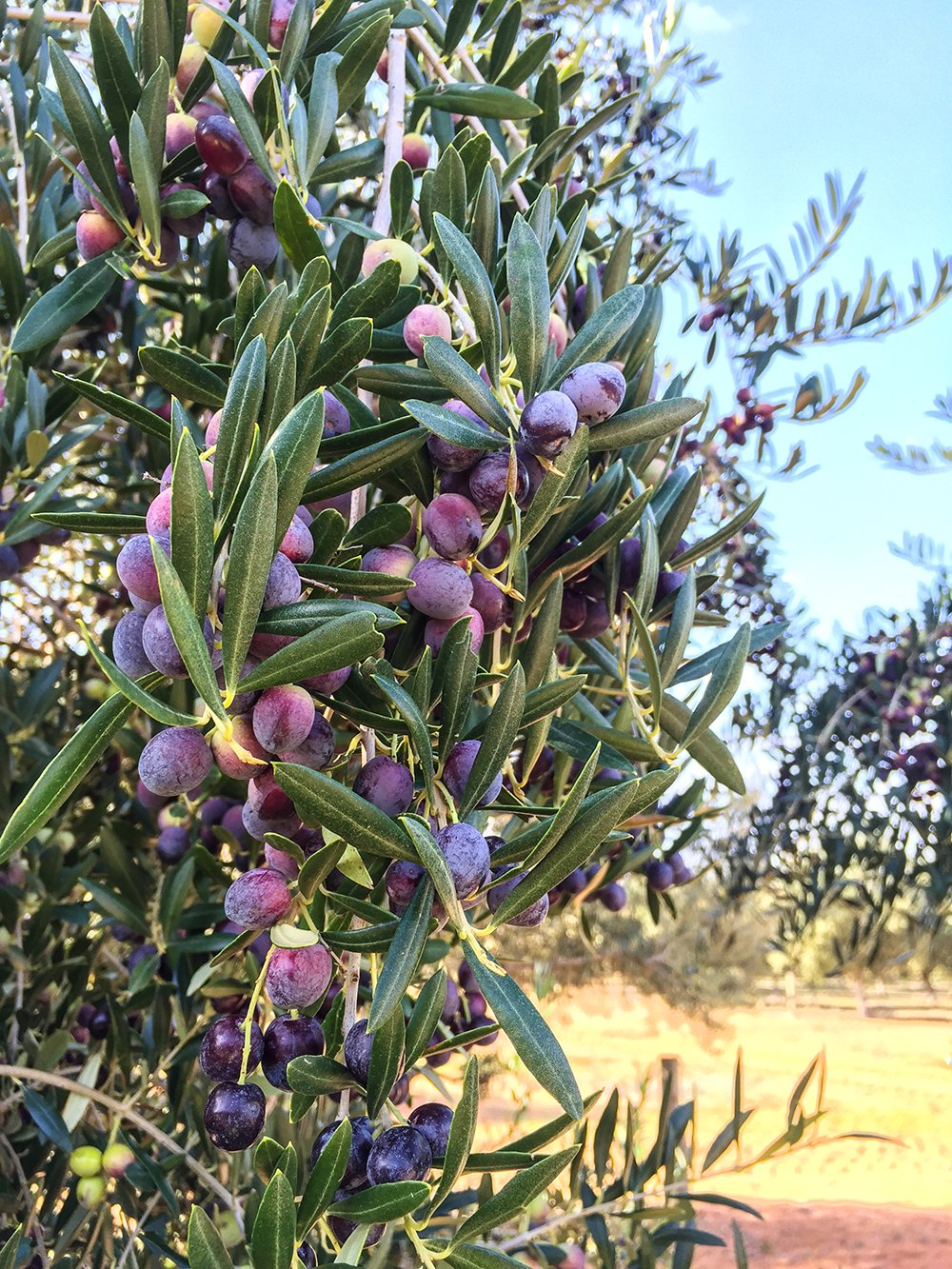
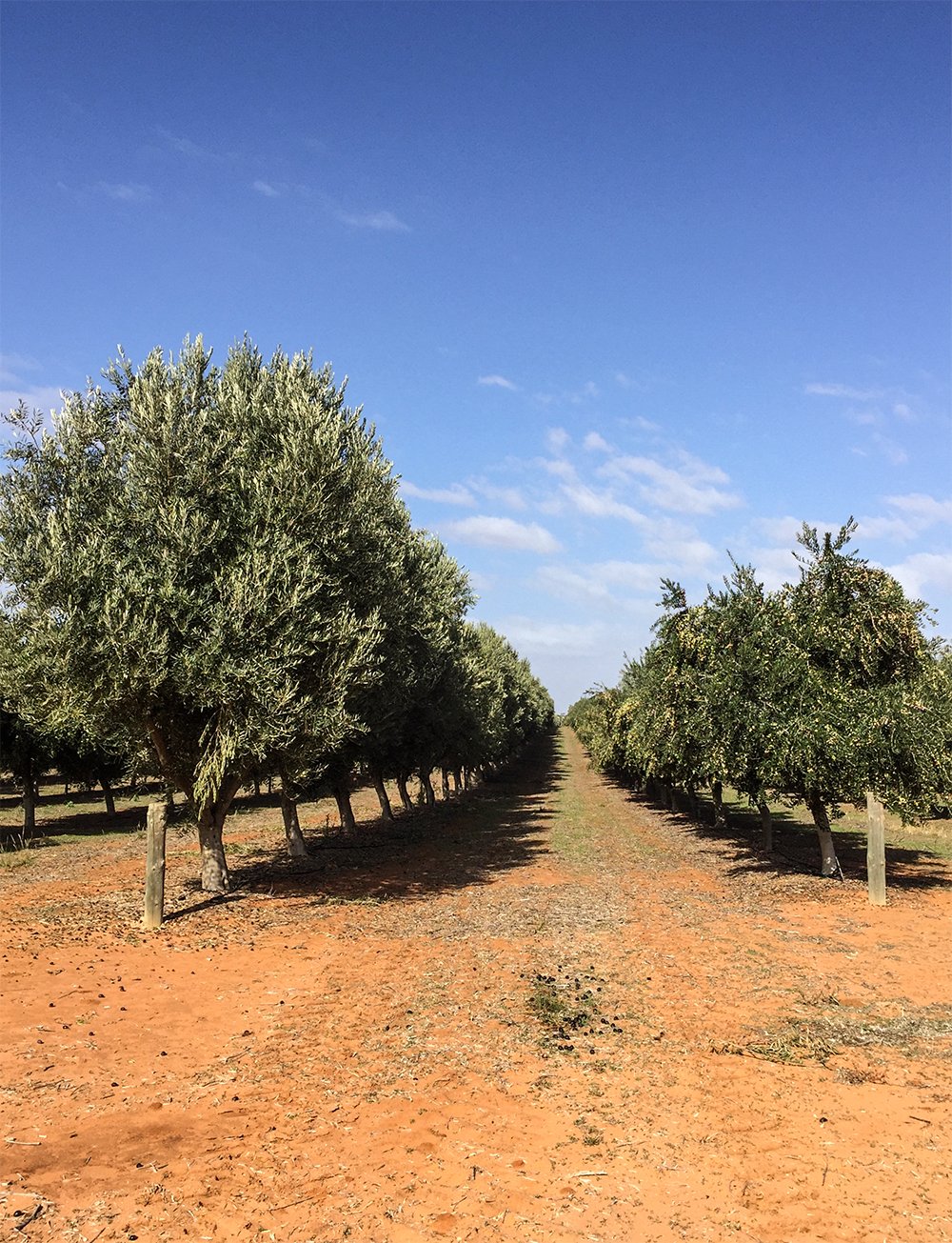
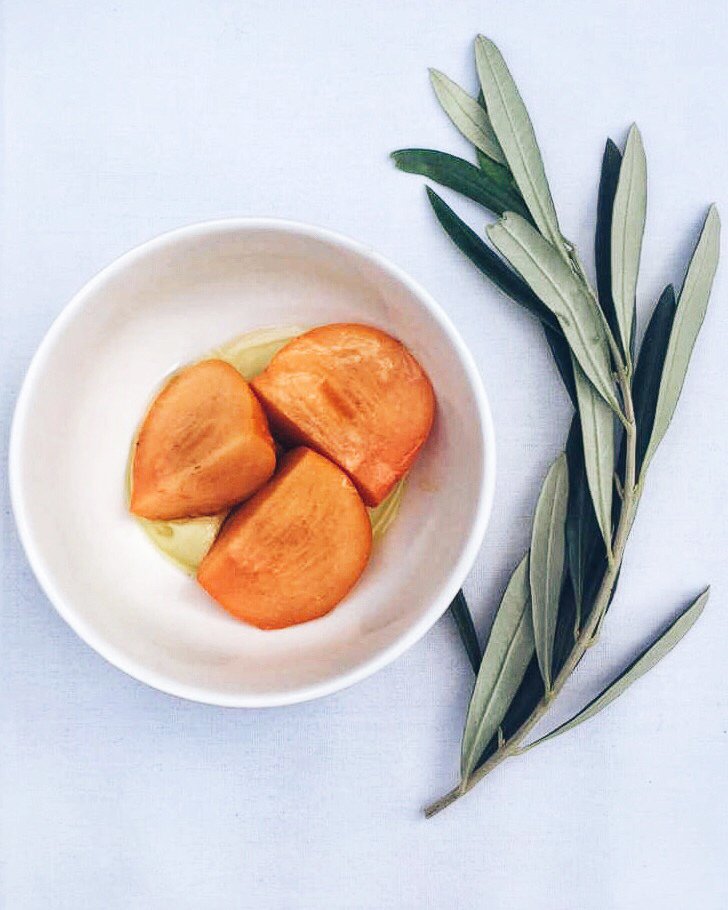

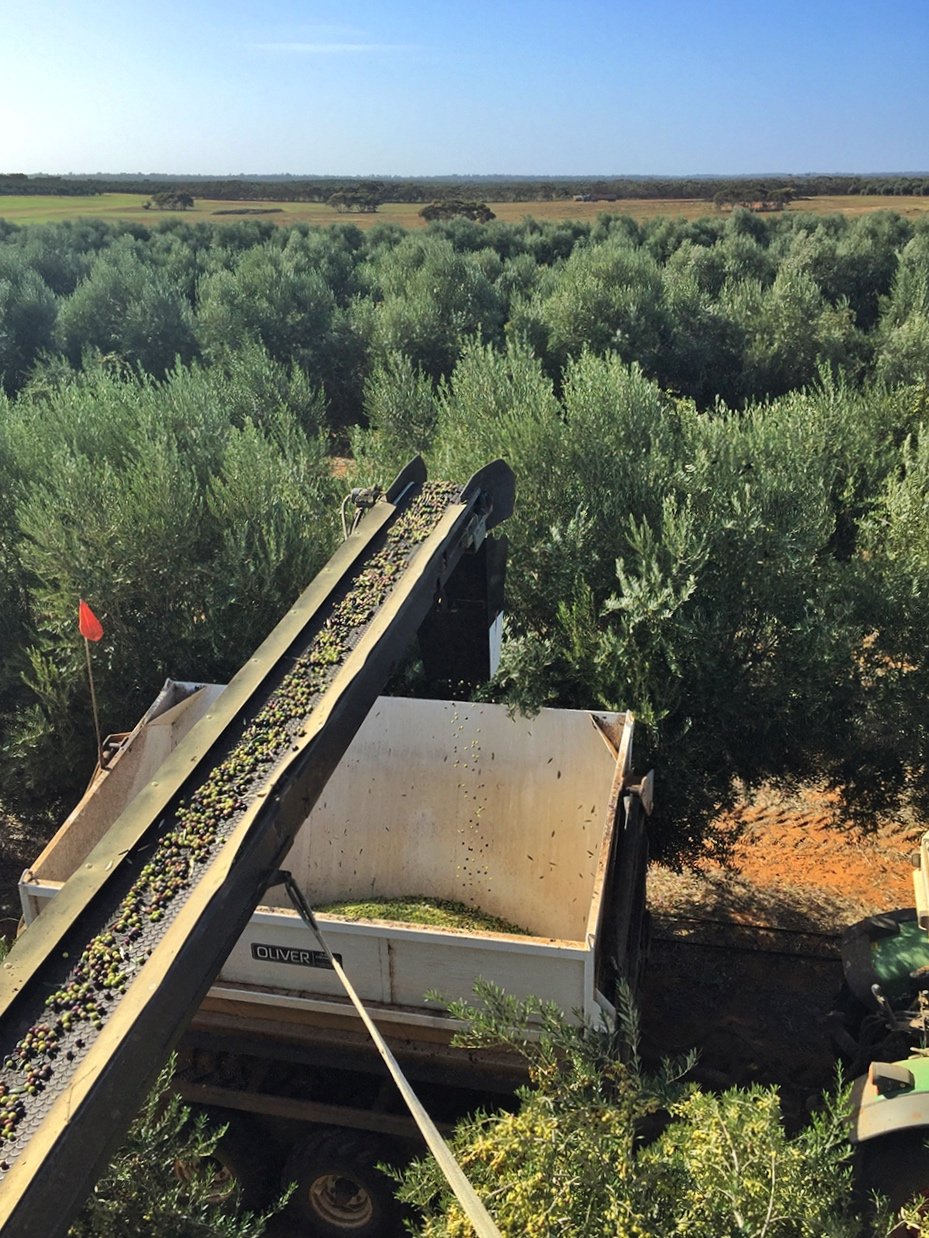
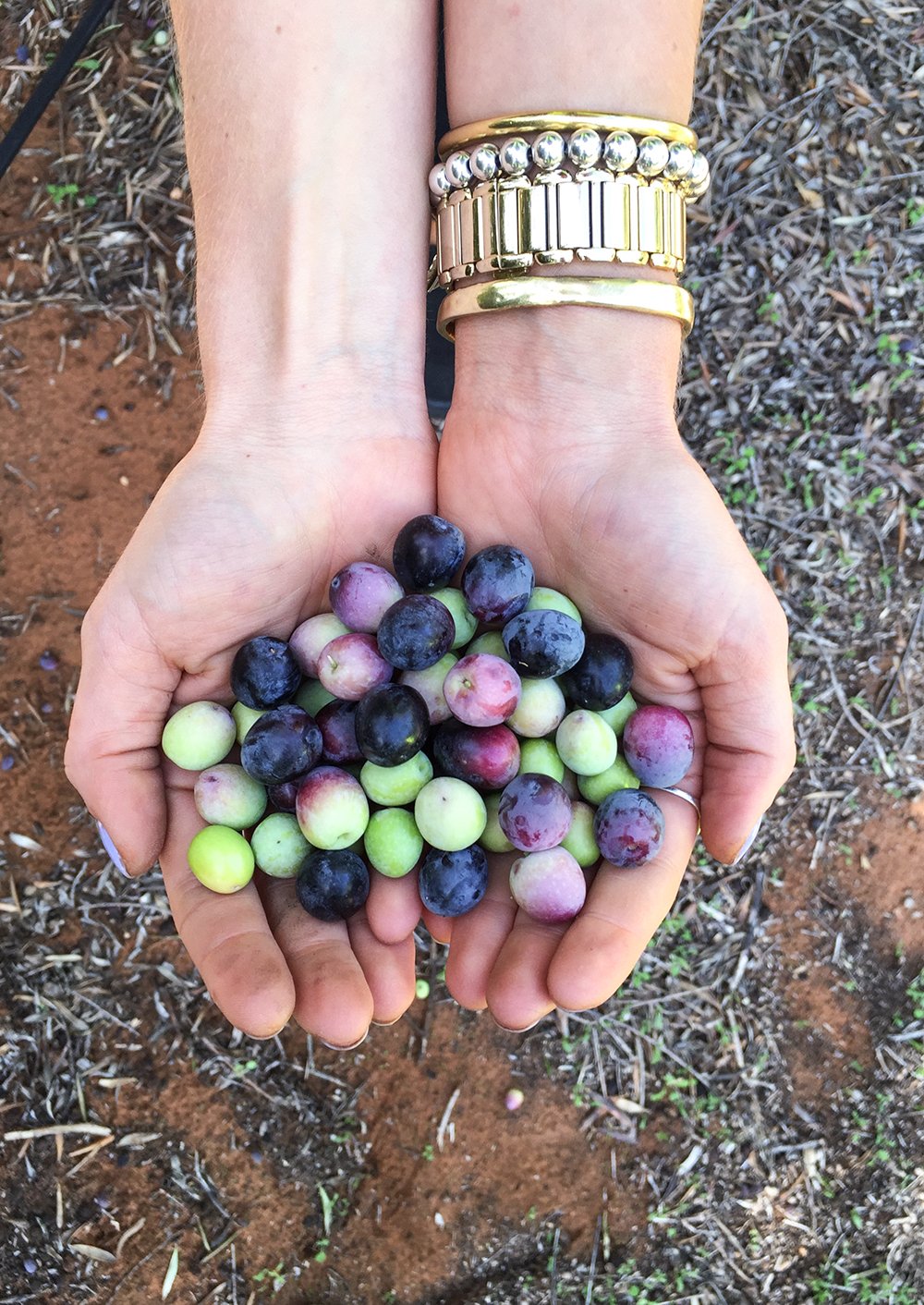
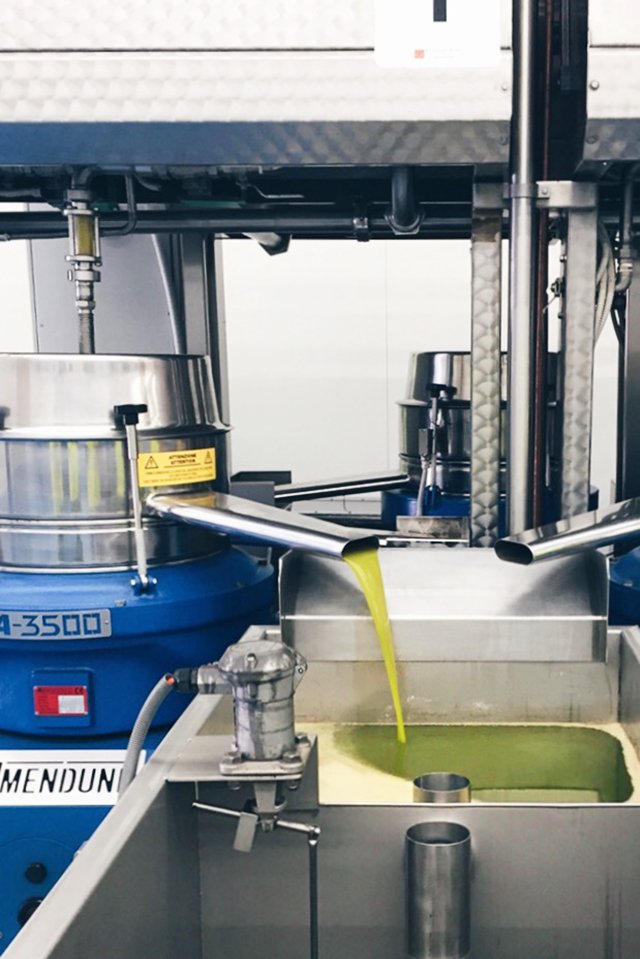
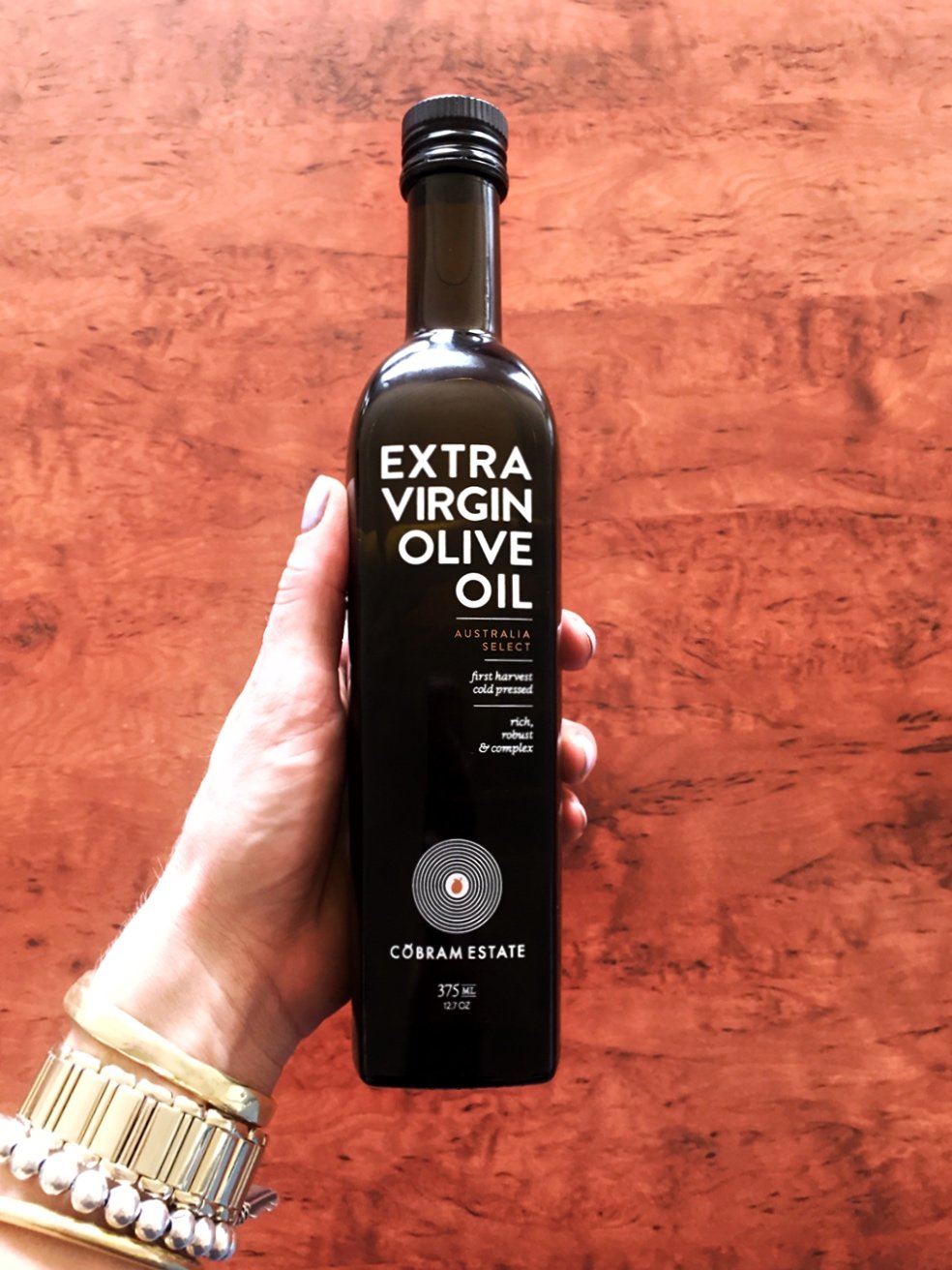
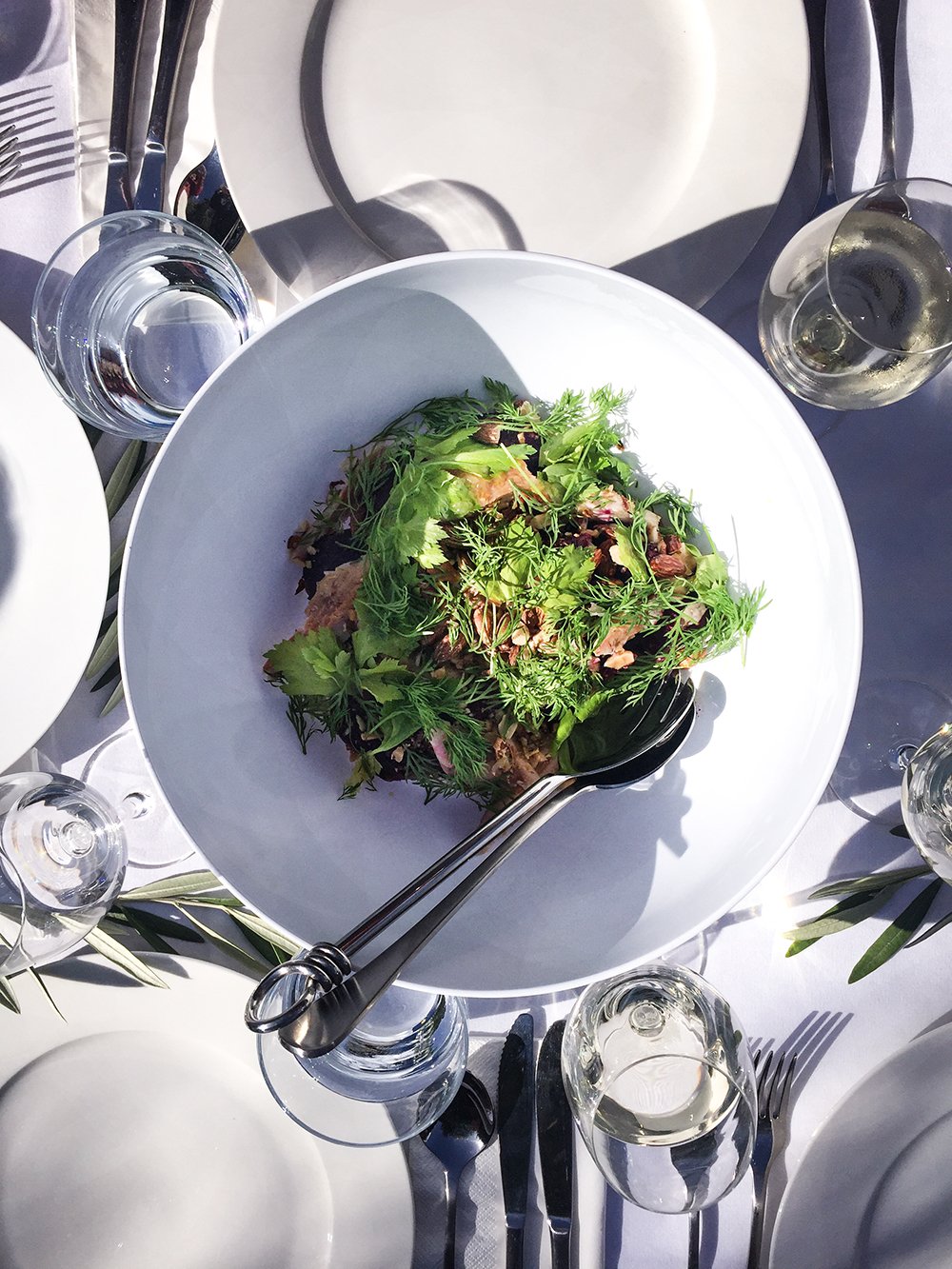
Wow…how gorgeous are those olives! Happy harvesting and feasting!
Great story! Never knew there was so much to this delicious oil.